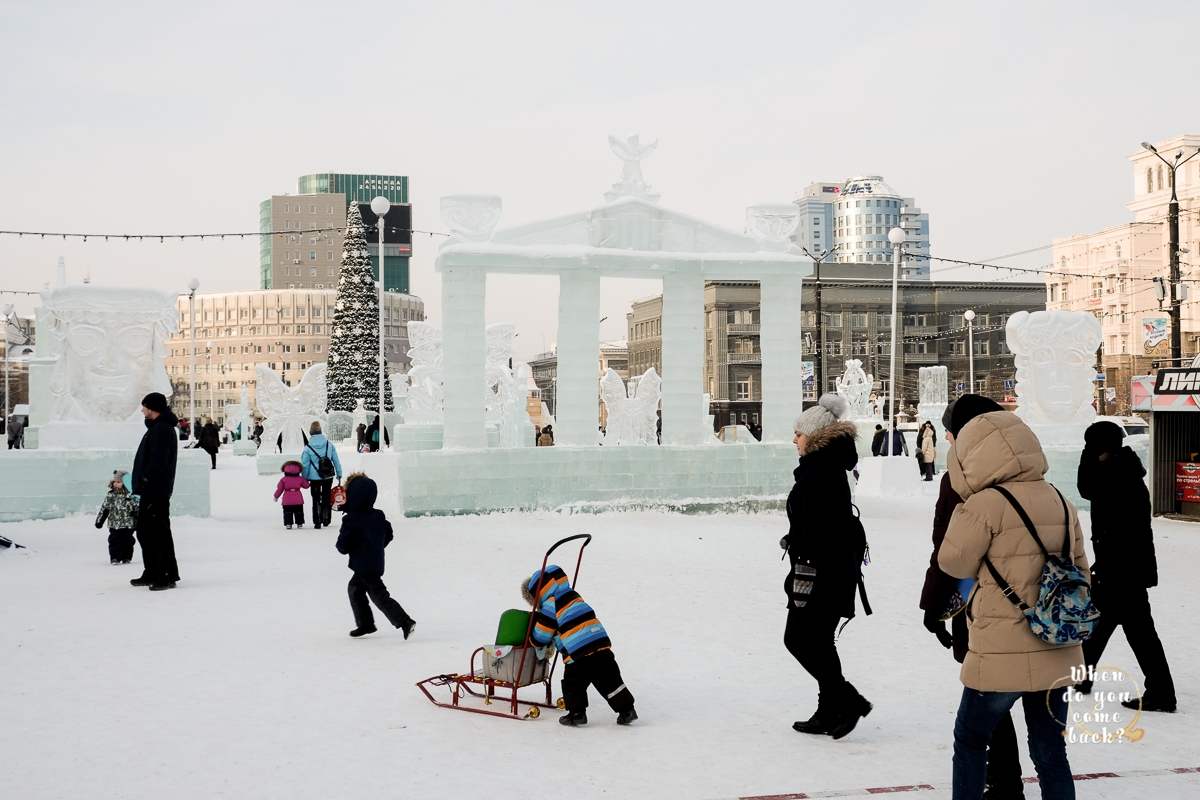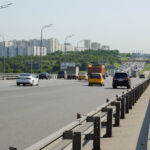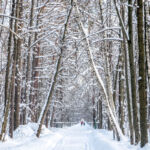Short guide on how to survive and enjoy temperatures that easily drop above -20°C. The few hours of winter light should be exploited and you cannot stay at home just because it’s cold. Proper clothing and proper nutrition are the secrets that we are going to discover.
We are in Russia, we are in winter, the season is long and above all it is dark! Days at the end of December hardly reach 5 hours of light in many areas of the country and I’m writing light by choice, not the sun. The sun is a chimera that disappears in October and it will come back with spring, in March. The few hours of winter sun, a few hours in a whole season, are cold and they don’t give any kind of energy. There are days, weeks, where the maximum temperature reaches -20°C, the peaks of frost occur in the colder region of the earth, north-east of the Russian Federation. The city of Jakutsk regularly sees the thermometer go down to -50°C and of course people do not want to go out for a walk.
This is a general picture, we intrigued you right? Do you have that unstoppable feeling of visiting the Siberian dry cold white, right? And yet people live here, they have fun, they go to concerts, drink coffee and find themselves for endless talk, but we must forget the concept of the square. Of course you cannot compare the lifestyle in warmer countries and, let me say, it is never correct to compare different places. Culture, history, social conditions and, last but not least, the climate, influence the lives and habits of local populations all over the world. We will therefore try to explain life in Russia in winter through the simplicity of everyday life and the traditional habits that have developed over thousands of years of living together with Grandfather Frost, the traditional celebration in winter on December 31st. The frost is like a grandfather, it is sweet, welcoming, a place to shelter and warm up; this is how cold is seen in the Russian culture, we must be friends, accomplices and live with it. You cannot escape from it, like a volcano for those who live nearby, frost is feared and respected, you have to defend yourself and find shelter but, as a lover, you have to enjoy every day and to keep the right distances.
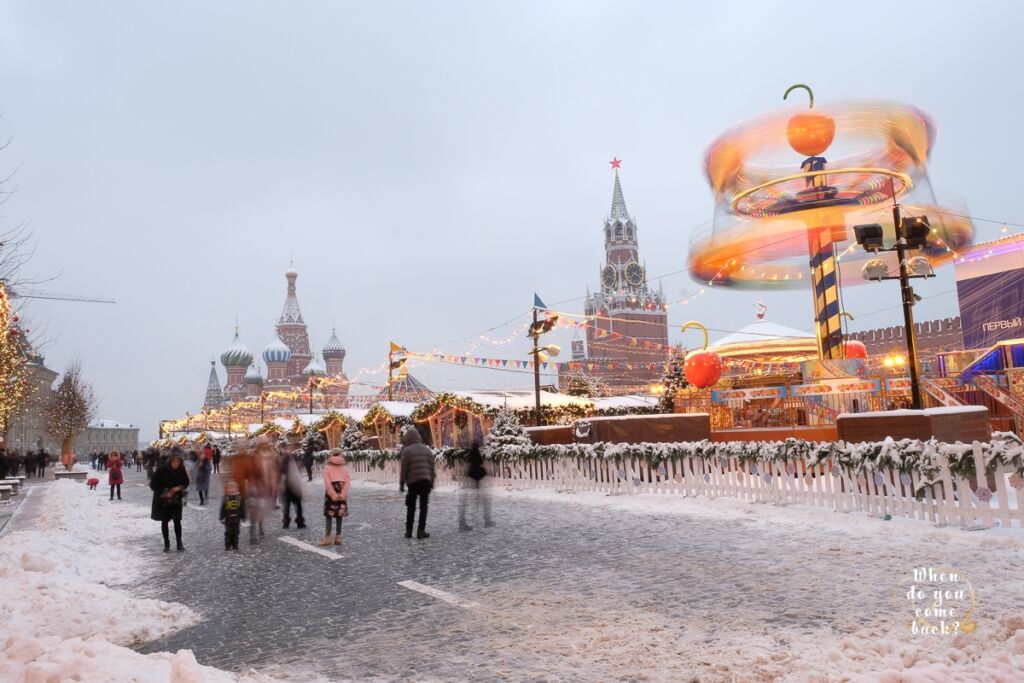
Red Square during Christmas time. 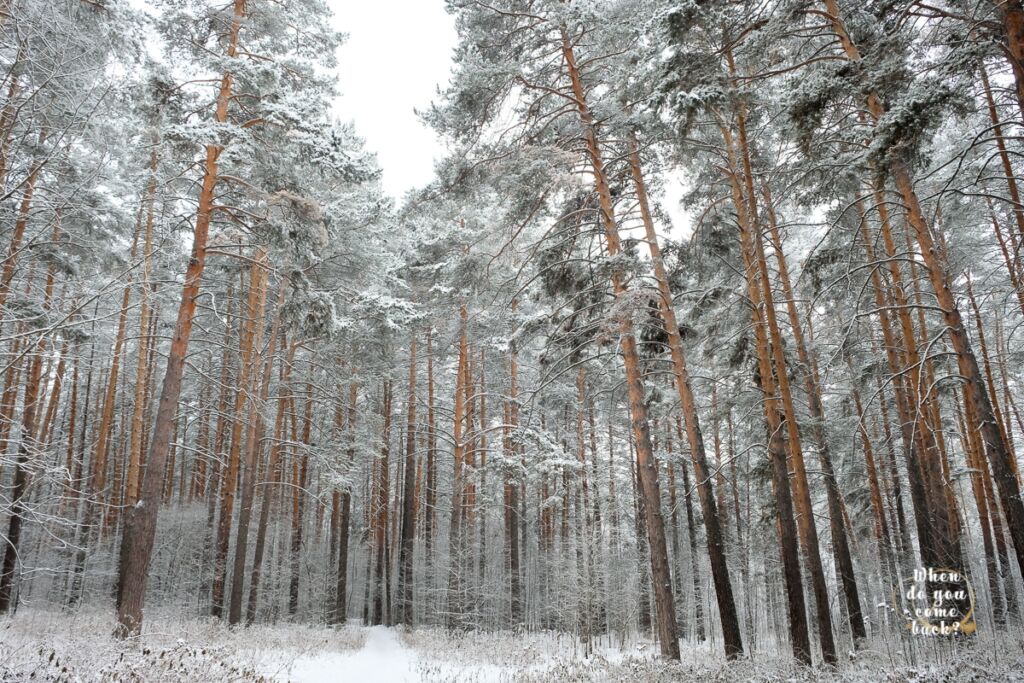
Forest in winter is completely frozen in russia. Temperature is -30°C and everything is white and slow. 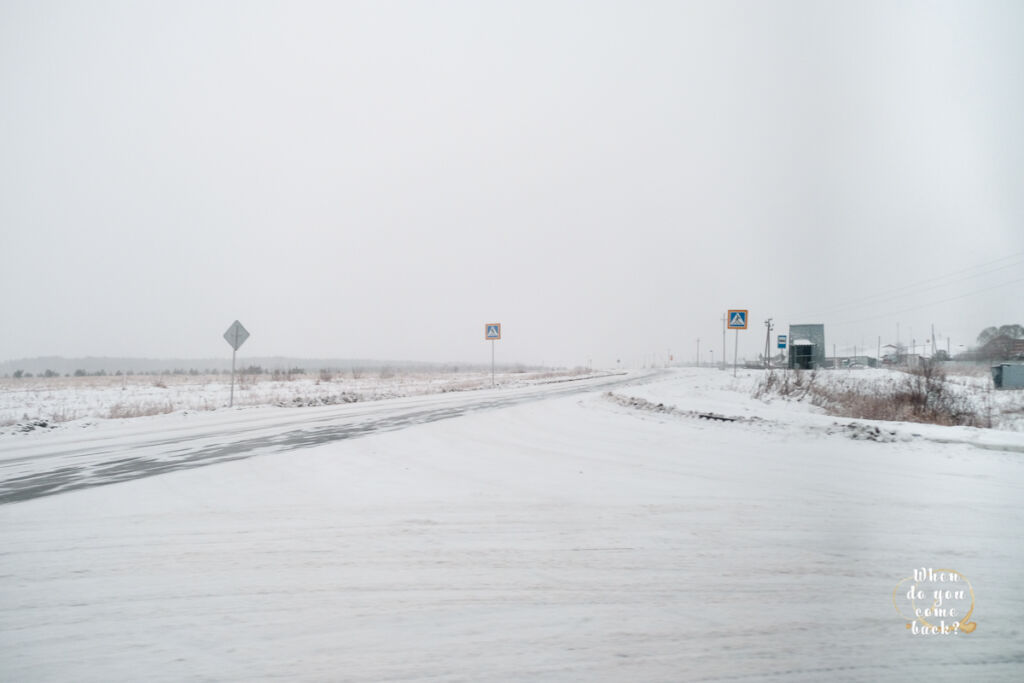
Forest in winter is completely frozen in russia. Temperature is -30°C and everything is white and slow. 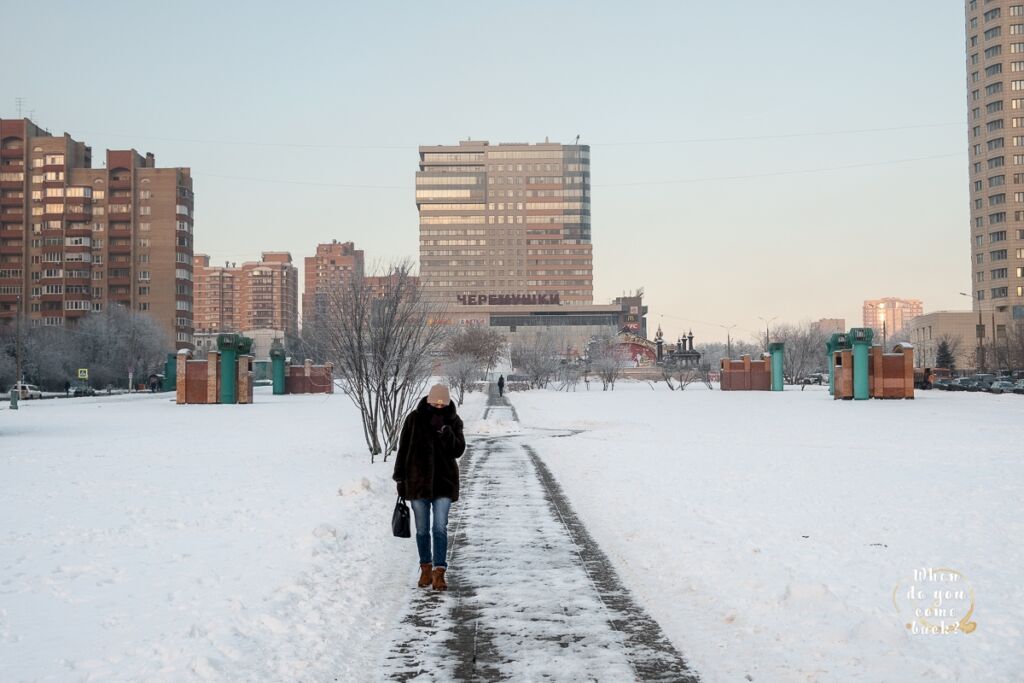
a girl is walking in Moscow in a cold morning. 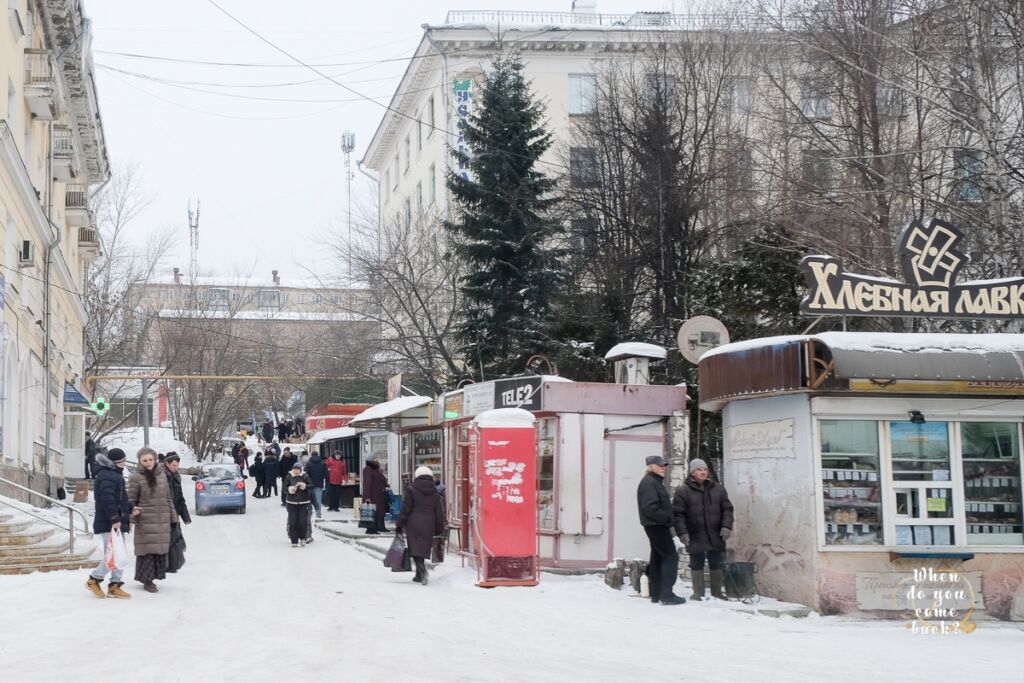
Forest in winter is completely frozen in russia. Temperature is -30°C and everything is white and slow.
What to eat
Let’s start talking about nutrition, there are foods that provide an extremely high calorie intake, foods that in the temperate areas would lead to cardiovascular diseases in a few years. An example of all is milk, in Europe is considered a whole milk with a 3.5% fat, here we are at 6%, almost the double. Starting from this all packaged foods and traditional foods have an adequate energy supply to the climate. The body must use a lot of “fuel” to maintain the temperature of 37°C and the daily calories that the body needs are higher than in temperate countries. Naturally life in the big cities is sedentary, the main job is in the office and not much time is spent outdoors, but the food is equally caloric, in this case the health does not benefit very much. We all know the delicious Russian caviar, but the sturgeon eggs have an exaggerated price for most of the population, so the red caviar, called Icrà (икра), is more widespread, it consists, as for its richer cousin, in eggs of fish but produced from salmon or trout, much easier to obtain and to breed. Fish, with its intake of calories and omega 3, is one of the fundamental foods in all of Russia. We are not talking about fresh fish, but dried or smoked; in all the markets you can find all kinds of fishes, from sea, oceans, rivers or lakes, coming from the immense territories of the Russian Federation. In the city of course, the refrigerator is very common to store it, I will never keep food outside in pollution, but in remote villages they are often kept outside, frozen, or dried to be used as a snack with beer or vodka or as a seasoning for a sandwich with mayonnaise and pickled gherkins. There are often bluefish as cod (tresca – tреска) or herring (selyodka – cелёдка) from the marine reserves of the north and the extreme east of the country.
What to drink
Alcohol is a very important subject in Russia, in the big European cities (Moscow and St. Petersburg) a cultural campaign is being carried out against alcoholism and consumption has dropped, the wealthiest prefer imported wines instead of local spirits . In all the rest of the country, however, it is normal to dine while sipping vodka every ten minutes, maybe less, is always an opportunity for a toast, at the end of the dinner you will have drunk a liter of vodka without realizing it, you will feel after. The consumption of alcohol, however is not a solution to the cold, gives you the sensation of heat immediately, but in the medium term the body cools, the energy used increases and dehydration due to excess of alcohol does not help physical well-being. An excellent alternative instead are teas or herbal teas: black, green, white or infusions of various herbs, from sage to rose hip. The culture of infusions in Russia is rooted and each village has its own specific blend of local herbs. Tea helps to warm up, it is also often the only way to drink tap water, which needs to be boiled, provides vitamins and substances from wild herbs very useful to counteract the lack of heat and light by acting as a natural medicine . A special mention should be made to what is called Ivan Tea, the main ingredient being the fermented and then dried leaves of Camenèrio (Epilobium angustifolium) with the addition of other local herbs and flowers, each region has its own specific recipe; its origin is lost over the centuries and even Hitler, during his campaign in Russia, bombed the main factories because he believed it was a miraculous drink that gave extraordinary powers to the Russian army, maybe it’s true. We have no evidence that it is a magic potion, but certainly the derived substances of wild herbs benefit many organs of the human body both to strengthen the immune system and to cleanse from toxins and parasites. Today this infusion is extremely popular and is considered a national drink on a par with vodka.
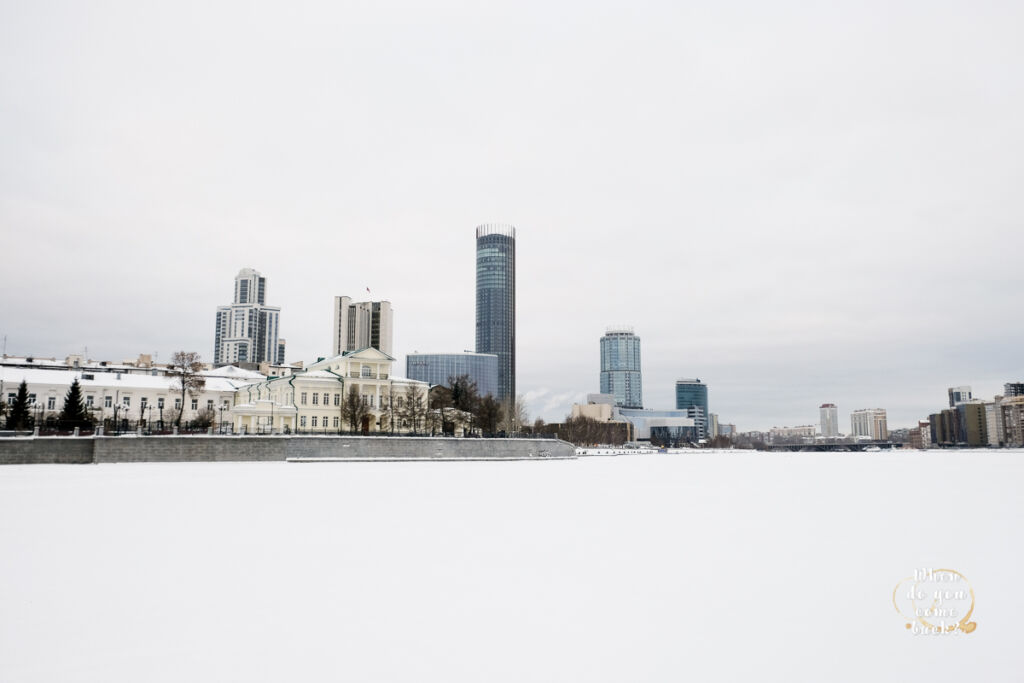
Forest in winter is completely frozen in russia. Temperature is -30°C and everything is white and slow. 
Panorama of a Moscow neighborhood. 
Valenki, tradiotional russian boots. 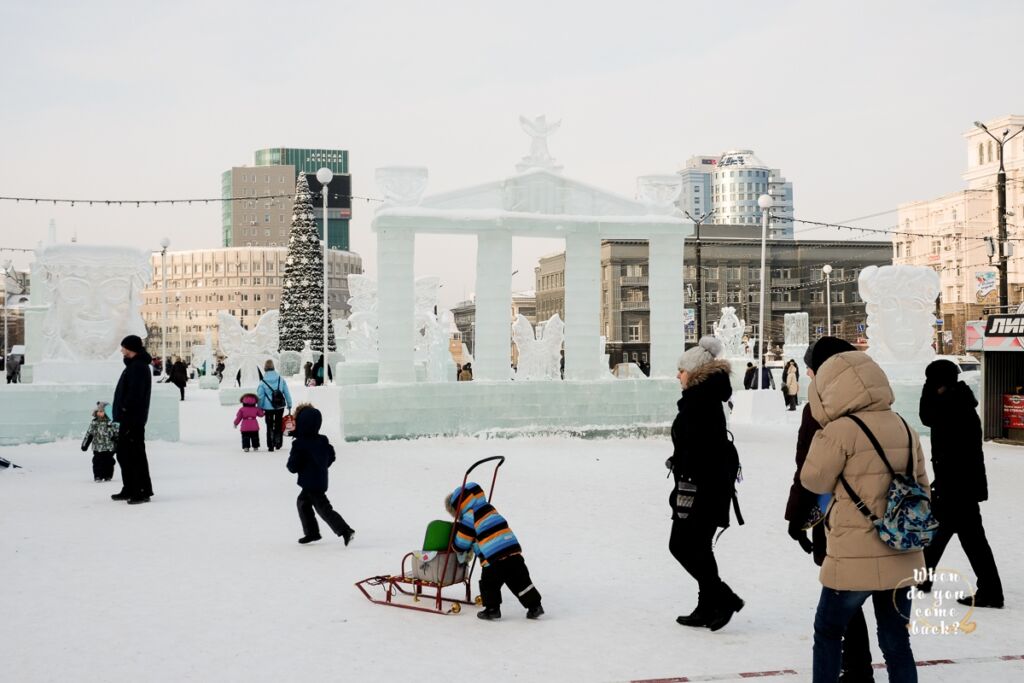
Forest in winter is completely frozen in russia. Temperature is -30°C and everything is white and slow.
How to dress
Nutrition and lifestyle influence how we cope with winter, but clothing is at the heart of it all. Today there are technical and thermic materials that allow you to be open air even at -30°C, a walk of one hour is something absolutely possible and you should try. Remember the story of the dry cold? It will also be dry but 30°C below zero are a lot, probably if it were wet life would be more complicated or impossible. Felt, as well, is the true gold of traditional clothing, insulating perfect for cold and heat, easy to find and very cheap. Felt caps are used also in sauna to avoid head overheating and with the same material are made special boots called valenki (валенки), there are all styles, with reinforced sole or silicone coated. The ideal is to use them to walk on fresh and clean snow without any addition or covering, like a sock. When the temperature is below -15°C there is no worries of getting wet, the water is not even taken into consideration. These boots allow perfect insulation from snow and ice and combined with traditional socks of raw wool, they have an incredible grip that allows you to not slip and walk safely even on the frozen surfaces of lakes and rivers. An important warning: any babushka (бабушка) – grandmother in Russian – will take care of your way to dress up to exhaustion. Jacket, pants and shoes are important, but their attention will focus on the hat and on the gloves, never go out without even if you see the bright sun, very rare.
Enjoy Russian traditions
We have briefly explained how to deal with the general winter, now you do not have to do is enter any house in Russia and you will no longer need to protect yourself from the cold, first because the temperature at home is at least 25°C, second because you’ll try by yourself the warmth and traditional Russian hospitality, invisible on the street but impossible to forget after entering in any home. The house is where social life takes place, you will drink and talk with friends for hours, for many reasons, which we will elaborate on in subsequent articles, the square in Russia is not the place to aggregation, but the kitchen.

